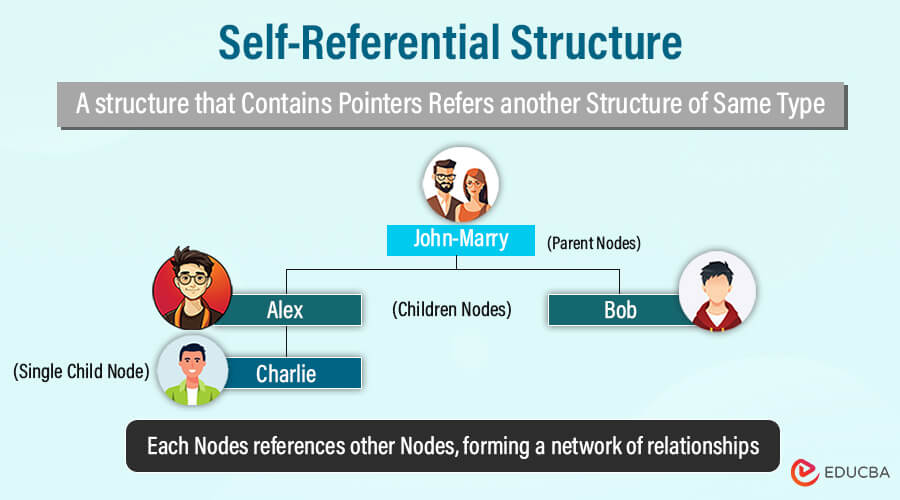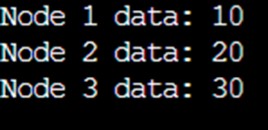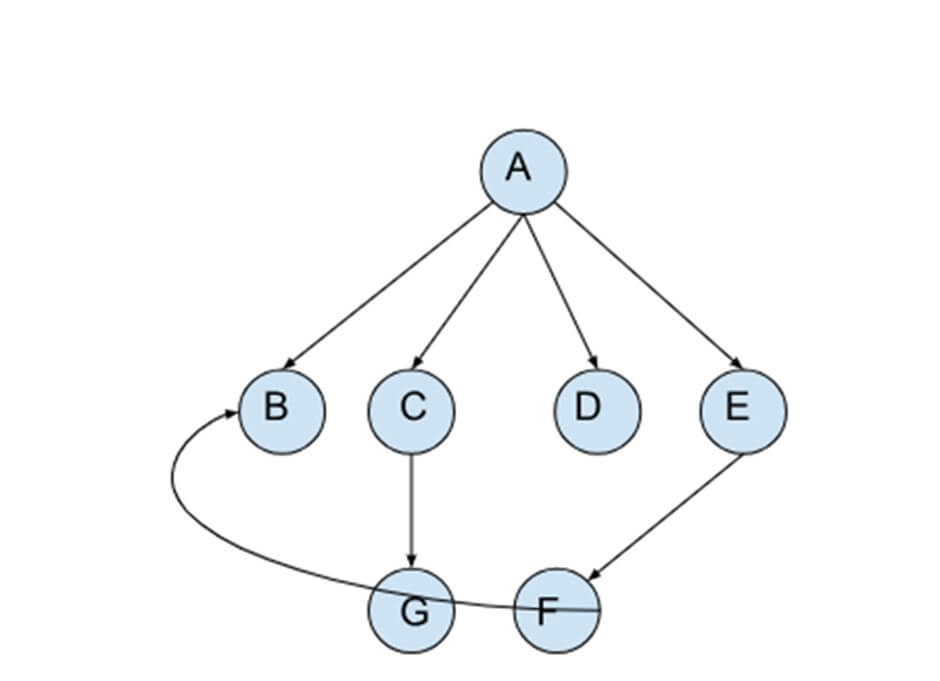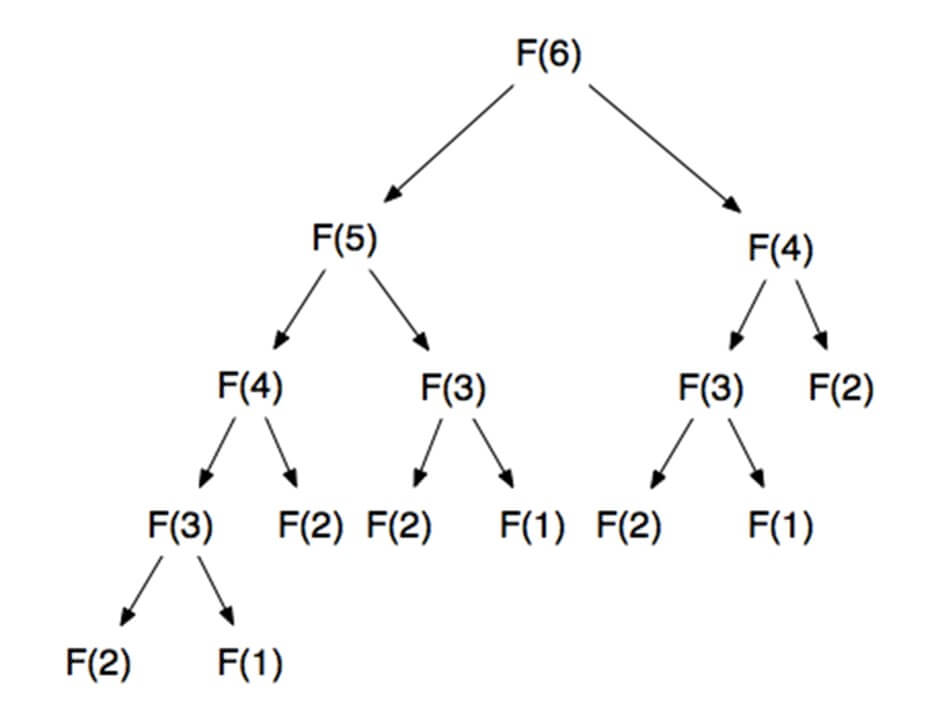What is a Self-referential structure
A structure that incorporates a pointer referencing another structure of identical type. This enables the construction of practical data structures like lists, queues, stacks, and trees. The linkage is concluded with a NULL pointer (0). Such structures are widely used dynamic data structures like trees, linked lists, etc.

Syntax of self-referential structure.
struct node1 {
int data1;
struct node1 *next;
};Here, next is a pointer to a struct node variable.
Key Takeaways
- Self-referential structures are crucial for forming data structures like linked lists.
- Objects point to the same structure in this structure and share its data type.
- It may include one or more pointers pointing to structures of the same type as members.
- These structures are extensively employed in dynamic data structures like trees and linked lists.
Table of Contents
Explanation of Self-referential Structure
A self-referential structure that contains a member that is a pointer to the same type of structure. This concept is often used in dynamic data structures like linked lists and trees. Below is the syntax for self-referential structure.
struct SelfReferential {
// Other members of the structure
// ...
struct SelfReferential *selfPointer;
};Here, selfPointer is a member of the structure that points to another structure of the same type.
Example
#include
struct SelfReferential {
int data;
struct SelfReferential *selfPointer;
};
int main() {
// Creating instances of the self-referential structure
struct SelfReferential node1, node2, node3;
// Assigning data values
node1.data = 10;
node2.data = 20;
node3.data = 30;
// Creating links between nodes
node1.selfPointer = &node2;
node2.selfPointer = &node3;
node3.selfPointer = NULL; // End of the linked list
// Accessing data through self-referential pointers
printf("Node 1 data: %d\n", node1.data);
printf("Node 2 data: %d\n", node1.selfPointer->data);
printf("Node 3 data: %d\n", node1.selfPointer->selfPointer->data);
return 0;
}Code Explanation
In this example, the SelfReferential structure contains an integer data and a pointer selfPointer pointing to another structure of the same type. The main function creates three nodes and establishes a linked list by making a selfPointer point to the next node. This structure allows the creation of dynamic data structures where elements refer to others of the same type.
Output:
Here,
- node1 has data 10, and its selfPointer points to node2.
- node2 has data 20, and its selfPointer points to node3.
- node3 has data 30, and its selfPointer is set to NULL, indicating the end of the linked list.
Therefore, the program prints the data values of each node in the linked list.
Why do we need a Self-referential structure?
Self-referential structures are important, such as creating dynamic and complex data structures. Below are a few reasons why self-referential structures are significant.
- To define recursive structures with an element refers back to the structure itself.
- To define algorithms or data structures with recursive operations.
- To manage memory, allocate memory dynamically, and connect structures flexibly.
- It offers versatility in various operations, such as managing data, representing relationships, and implementing complex algorithms.
- To create intelligent algorithms, such as recursive functions or self-adjusting data structures.
What are the types of Self-referential structures?
Self-referential structures are of two types-
- Single Link self-referential structure
- Multiple Link self-referential structures
Let’s see how they differ and are used in different scenarios.
- Single Link self-referential structure
As the name suggests, these structures only contain a single link that links to the same structure type. This concept is similar to a singly linked list, where each node has one pointer storing the address of the next node. You can use it to store diverse data items, connecting them by storing one item’s address in the linked part of the next node.
Implementation steps of Single Link
- Define the self-referential structure.
- Create a Node structure containing an integer (data) and a pointer to another node of the same type (next).
- Create nodes using dynamic memory allocation.
- Allocate memory for the first node (head) using malloc and set its type to struct Node.
- Repeat the process for additional nodes (second, third, etc.) as needed.
- Assign data and link nodes.
- Set the data field of each node to the desired value.
- Connect nodes by assigning the next pointer of one node to point to the next node in the sequence.
- Make sure to set the last node’s next pointer to NULL to indicate the end of the linked list.
- Traverse and print the linked list.
- Create a pointer (current) and initialize it to the head of the list.
- Use a loop to traverse the list by following the next pointers until reaching the end (where next is NULL).
- Print the data of each node during the traversal.
- Free allocated memory
- Use free to release the memory allocated for each node.
- Ensure that all dynamically allocated memory is freed to avoid memory leaks.
C Example-
#include
#include
// Define the self-referential structure
struct Node {
int data;
struct Node* next;
};
int main() {
// Create nodes
struct Node* head = malloc(sizeof(struct Node));
struct Node* second = malloc(sizeof(struct Node));
struct Node* third = malloc(sizeof(struct Node));
// Assign data and link nodes
head->data = 1;
head->next = second;
second->data = 2;
second->next = third;
third->data = 3;
third->next = NULL; // End of the linked list
// Traverse and print the linked list
struct Node* current = head;
while (current != NULL) {
printf("%d -> ", current->data);
current = current->next;
}
printf("NULL\n");
// Free allocated memory
free(head);
free(second);
free(third);
return 0;
}Output:
Java Example-
class Node {
int data;
Node next;
Node(int data) {
this.data = data;
this.next = null;
}
}
public class LinkedListExample {
public static void main(String[] args) {
// Create nodes
Node head = new Node(1);
Node second = new Node(2);
Node third = new Node(3);
// Link nodes
head.next = second;
second.next = third;
// Traverse and print the linked list
Node current = head;
while (current != null) {
System.out.print(current.data + " -> ");
current = current.next;
}
System.out.println("NULL");
}
}Output:
Python Example-
class Node:
def __init__(self, data):
self.data = data
self.next = None
# Create nodes
head = Node(1)
second = Node(2)
third = Node(3)
# Link nodes
head.next = second
second.next = third
# Traverse and print the linked list
current = head
while current:
print(current.data, end=" -> ")
current = current.next
print("None")Output:
- Multiple Link self-referential structures
As suggested by its name, self-referential structures with multiple links can possess more than one self-pointers. It helps to create highly complicated data structures. You can easily connect one node to multiple nodes at a time.
Implementation steps of Multiple Link
- Define the self-referential structure with multiple links
- Create a structure named Node that contains an integer (data), a pointer to the next node (next), and a pointer to the previous node (prev).
- Create nodes using dynamic memory allocation.
- Allocate memory for the first node (head) using malloc and set its type to struct Node.
- Repeat the process for additional nodes (second, third, etc.) as needed.
- Assign data and link nodes.
- Set the data field of each node to the desired value.
- Connect nodes by assigning the next pointer of one node to point to the next node in the sequence and the previous pointer to the last node.
- Set the next and previous pointers of the first and last nodes correctly.
- Traverse and print the linked list forward
- Create a pointer (current) and initialize it to the head of the list.
- Use a loop to traverse the list by following the next pointers until reaching the end (where next is NULL).
- Print the data of each node during the forward traversal.
- Traverse and print the linked list backward
- Reset the current pointer to the last node in the list.
- Use a loop to traverse the list backward by following the prev pointers until reaching the beginning (where prev is NULL).
- Print the data of each node during the backward traversal.
- Free allocated memory
- Use free to release the memory allocated for each node.
- Ensure that all dynamically allocated memory is freed to avoid memory leaks.
C Example-
#include
#include
// Define the self-referential structure with multiple links
struct Node {
int data;
struct Node* next;
struct Node* prev;
};
int main() {
// Create nodes
struct Node* head = malloc(sizeof(struct Node));
struct Node* second = malloc(sizeof(struct Node));
struct Node* third = malloc(sizeof(struct Node));
// Assign data and link nodes
head->data = 1;
head->next = second;
head->prev = NULL;
second->data = 2;
second->next = third;
second->prev = head;
third->data = 3;
third->next = NULL; // End of the linked list
third->prev = second;
// Traverse and print the linked list forward
struct Node* current = head;
printf("Forward: ");
while (current != NULL) {
printf("%d -> ", current->data);
current = current->next;
}
printf("NULL\n");
// Traverse and print the linked list backward
current = third;
printf("Backward: ");
while (current != NULL) {
printf("%d -> ", current->data);
current = current->prev;
}
printf("NULL\n");
// Free allocated memory
free(head);
free(second);
free(third);
return 0;
}Output:
Java Example-
class Node {
int data;
Node next;
Node prev;
Node(int data) {
this.data = data;
this.next = null;
this.prev = null;
}
}
public class DoublyLinkedListExample {
public static void main(String[] args) {
// Create nodes
Node head = new Node(1);
Node second = new Node(2);
Node third = new Node(3);
// Link nodes
head.next = second;
head.prev = null;
second.next = third;
second.prev = head;
third.next = null; // End of the linked list
third.prev = second;
// Traverse and print the linked list forward
Node current = head;
System.out.print("Forward: ");
while (current != null) {
System.out.print(current.data + " -> ");
current = current.next;
}
System.out.println("NULL");
// Traverse and print the linked list backward
current = third;
System.out.print("Backward: ");
while (current != null) {
System.out.print(current.data + " -> ");
current = current.prev;
}
System.out.println("NULL");
}
}Output:
Python Example-
class Node:
def __init__(self, data):
self.data = data
self.next = None
self.prev = None
# Create nodes
head = Node(1)
second = Node(2)
third = Node(3)
# Link nodes
head.next = second
head.prev = None
second.next = third
second.prev = head
third.next = None # End of the linked list
third.prev = second
# Traverse and print the linked list forward
current = head
print("Forward:", end=" ")
while current:
print(current.data, end=" -> ")
current = current.next
print("None")
# Traverse and print the linked list backward
current = third
print("Backward:", end=" ")
while current:
print(current.data, end=" -> ")
current = current.prev
print("None")Output:
Self-referential structure Applications
You can use the self-referential structure for several reasons. Below are why self-referential structures are essential.
- Dynamic Data Structures
Self-referential structures are used in dynamic data structures like linked lists, trees, graphs, and more to create flexible and resizable data structures where elements point to other elements of the same type.
- Linked Lists
In linked lists, each node contains a reference (pointer) to the next node, forming a chain of elements. The self-referential structure can link nodes together, enabling dynamic allocation and deallocation of memory as required.
- Trees and Graphs
In hierarchical structures like trees and graphs, nodes often have child nodes, and each child may have further children. Self-referential structures help in creating complex hierarchical relationships among data elements.
- Recursive Structures
Some algorithms and data structures involve recursive definitions, where a structure refers to itself. Self-referential structures can help define such recursive structures, allowing for elegant and concise representations.
- Efficient Memory Management
Self-referential structures provide a way to manage memory efficiently. Elements can be dynamically allocated and linked, allowing for a more adaptable use of memory resources.
When to Use Self-Referential Structure
You can use self-referential structure in the following scenarios.
- It lets you represent relationships in the real world, making it easier to model complex hierarchies or interconnected entities in programming.
- These structures use memory more efficiently while dealing with variable-sized or complex data.
- Algorithms like tree and graph traversal allow efficient navigation and processing of data.
- Self-referential structures play a key role in recursive problem-solving, breaking down problems into smaller, similar subproblems for efficient solutions.
Advantages and Disadvantages
Advantages
- Dynamic Memory Allocation
Self-referential structures help create dynamic data structures like linked lists, trees, and graphs. It also allows dynamic allocation and deallocation of memory, providing flexibility in managing data structures at runtime.
- Flexibility in Data Organization
Self-referential structures let us create complex and flexible data organizations, such as linked lists with varying lengths, trees with variable branching, and graphs with arbitrary connections.
- Ease of Insertion and Deletion
In linked lists, self-referential structures make inserting or deleting elements relatively easy. Insertions and deletions can be accomplished by adjusting pointers without shifting or resizing the entire structure.
- Efficient Memory Usage
These structures allow for efficient memory usage by allocating memory only when needed. This contrasts with fixed-size arrays, which may allocate more memory than necessary.
- Support for Recursive Algorithms
Self-referential structures are well-suited for recursive algorithms. For example, in a binary tree, each subtree is a minor instance of the overall tree structure.
- Ease of Implementation for Certain Algorithms
Algorithms like depth-first search and breadth-first search in graphs become more intuitive to implement using self-referential structures.
Disadvantages
- This structure requires more memory as it stores additional pointers or references.
- Managing memory is complex, leading to issues like memory leaks and dangling pointers.
- This structure mainly works around pointers, which can introduce complexity and the risk of errors, such as segmentation faults.
- Traversing self-referential structures may involve more overhead than superficial data structures like arrays.
- In specific scenarios, self-referential structures may lead to circular references, causing infinite loops or making it challenging to determine the end of a structure.
- Unlike arrays, self-referential structures, especially linked lists, do not support constant-time random access to elements. Accessing an element requires traversing the structure from the beginning.
Real-life Examples
- Russell’s Paradox Theorem:
Bertrand Russell discovered this paradox in 1901 while working on the foundations of set theory. The set of all sets that do not contain themselves gives rise to the paradox. Let’s denote this set as R, where R is the set of all sets that do not contain themselves:
R = { X: X is a set and X ∉ X }
Now, let’s ask the question: Does R contain itself?
If R contains itself, according to its definition, it shouldn’t be in R because it contains sets that do not contain themselves. This leads to a contradiction.
If R does not contain itself, then, by its definition, it should be in R (as R encompasses all sets that do not include themselves). Again, we encounter a contradiction.
This paradoxical situation highlights a foundational issue within set theory, specifically with the unrestricted comprehension axiom, which allows us to define sets by specifying a property their elements must satisfy. In this case, the property is “not containing itself.
- DNA Self-replication
DNA Structure:
All known living things are developed and function according to genetic instructions in a DNA molecule (deoxyribonucleic acid). It consists of two long chains of nucleotides twisted to form a double helical structure. In DNA, a nucleotide unit consists of a sugar molecule (known as deoxyribose), a phosphate group, and one of four nitrogenous bases (contains adenine, thymine, cytosine, or guanine). The sequence of these nitrogenous bases (adenine, thymine, cytosine, and guanine) encodes genetic information.
Self-Replication Process:
The fundamental characteristic of DNA is its ability to self-replicate. This process ensures the transference of genetic information from one generation of cells to the next. The mechanism of DNA replication occurs during the cell cycle, particularly in the S (synthesis) phase of interphase before cell division.
Significance and Cellular Function:
DNA self-replication is crucial for the continuity of genetic information across generations of cells. It ensures that genetic instructions for cellular functions, growth, and development are faithfully passed on during cell division (mitosis or meiosis). This process is foundational to the principles of inheritance and is central to the perpetuation of life. The intricate machinery and fidelity of DNA replication contribute to the stability and diversity of living organisms.
Let us understand and implement the Code.
C Example:
#include
#include
void replicateDNA(char originalDNA[]) {
int len = strlen(originalDNA);
char newDNA[len + 1];
for (int i = 0; i < len; i++) {
switch (originalDNA[i]) {
case 'A':
newDNA[i] = 'T';
break;
case 'T':
newDNA[i] = 'A';
break;
case 'C':
newDNA[i] = 'G';
break;
case 'G':
newDNA[i] = 'C';
break;
default:
// Handle other characters if needed
newDNA[i] = originalDNA[i];
}
}
newDNA[len] = '\0'; // Null-terminate the string
printf("Original DNA: %s\n", originalDNA);
printf("Replicated DNA: %s\n", newDNA);
}
int main() {
char originalDNA[] = "ATCG";
replicateDNA(originalDNA);
return 0;
}Output:
Python Example:
def replicate_dna(original_dna):
new_dna = ""
for base in original_dna:
if base == 'A':
new_dna += 'T'
elif base == 'T':
new_dna += 'A'
elif base == 'C':
new_dna += 'G'
elif base == 'G':
new_dna += 'C'
else:
# Handle other characters if needed
new_dna += base
print("Original DNA:", original_dna)
print("Replicated DNA:", new_dna)
original_dna = "GTAC"
replicate_dna(original_dna)Output:
Java Example:
public class DNAReplication {
public static void replicateDNA(String originalDNA) {
StringBuilder newDNA = new StringBuilder();
for (char base : originalDNA.toCharArray()) {
switch (base) {
case 'A':
newDNA.append('T');
break;
case 'T':
newDNA.append('A');
break;
case 'C':
newDNA.append('G');
break;
case 'G':
newDNA.append('C');
break;
default:
// Handle other characters if needed
newDNA.append(base);
}
}
System.out.println("Original DNA: " + originalDNA);
System.out.println("Replicated DNA: " + newDNA.toString());
}
public static void main(String[] args) {
String originalDNA = "ACTG";
replicateDNA(originalDNA);
}
}Output:
Conclusion
Self-referential structures are a powerful tool for programmers to create a structure that points to the same type of structure. It facilitates the creation of dynamic and highly interconnected data structures. Working well with linked lists to trees, self-referential structures efficiently solve complex problems. Mastering self-referential structures will enhance your ability to design optimized algorithms.
Frequently Asked Questions (FAQs)
Q1. Can you use self-referential structures in binary trees?
Answer: You can use the Self-referential structures with binary trees in a binary tree. In binary trees, each node has data and pointers to its left and right pals, creating a recursive structure.
Q2. Is there a risk of memory fragmentation with self-referential structures?
Answer: Yes, there is a potential for memory fragmentation, mainly when frequent creation and deletion of nodes occur. This may lead to scattered, non-contiguous memory blocks, impacting memory allocation efficiency. To address this concern, consider implementing proper memory management practices, such as periodic memory defragmentation or utilizing memory pools. These measures help mitigate fragmentation issues and ensure more optimal memory utilization.
Q3. How can you steer clear of infinite loops in self-referential structures?
Answer: To avoid those infinite loops in self-referential structures, you must understand the Code smartly. Use proper termination conditions, and watch for those null pointers.
Recommended Articles
We hope that this EDUCBA information on “Self-referential structures” was beneficial to you. You can view EDUCBA’s recommended articles for more information,

















